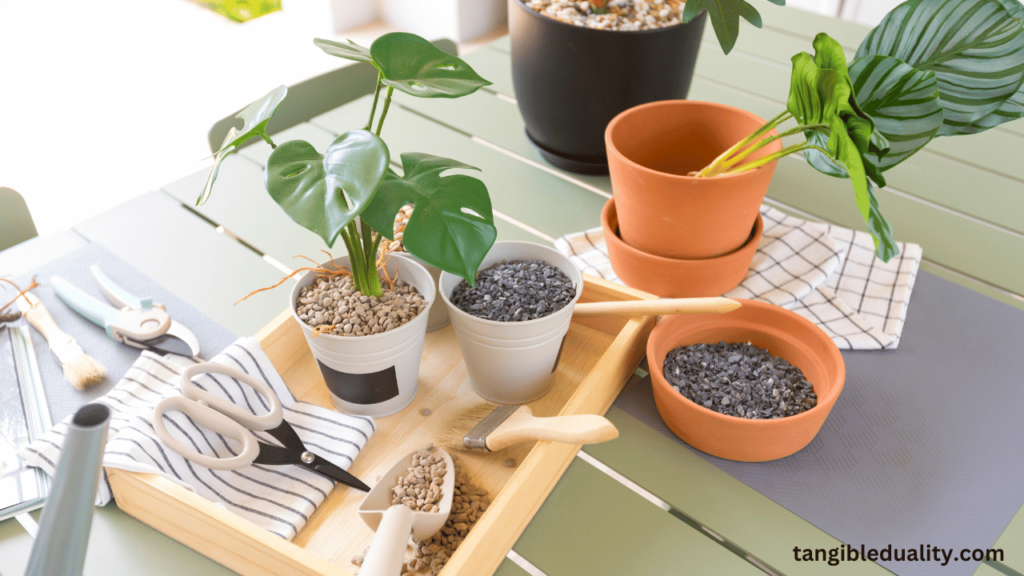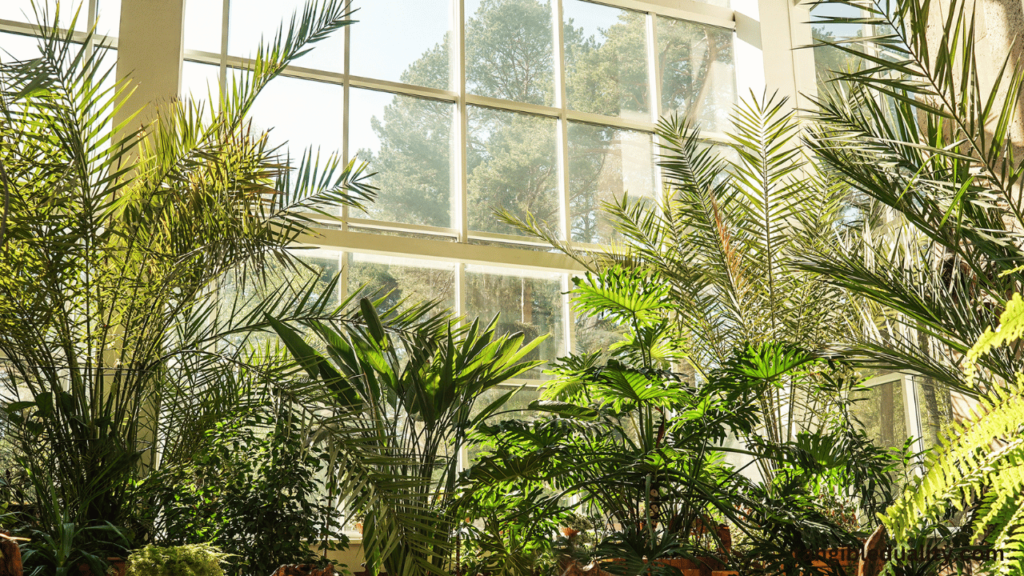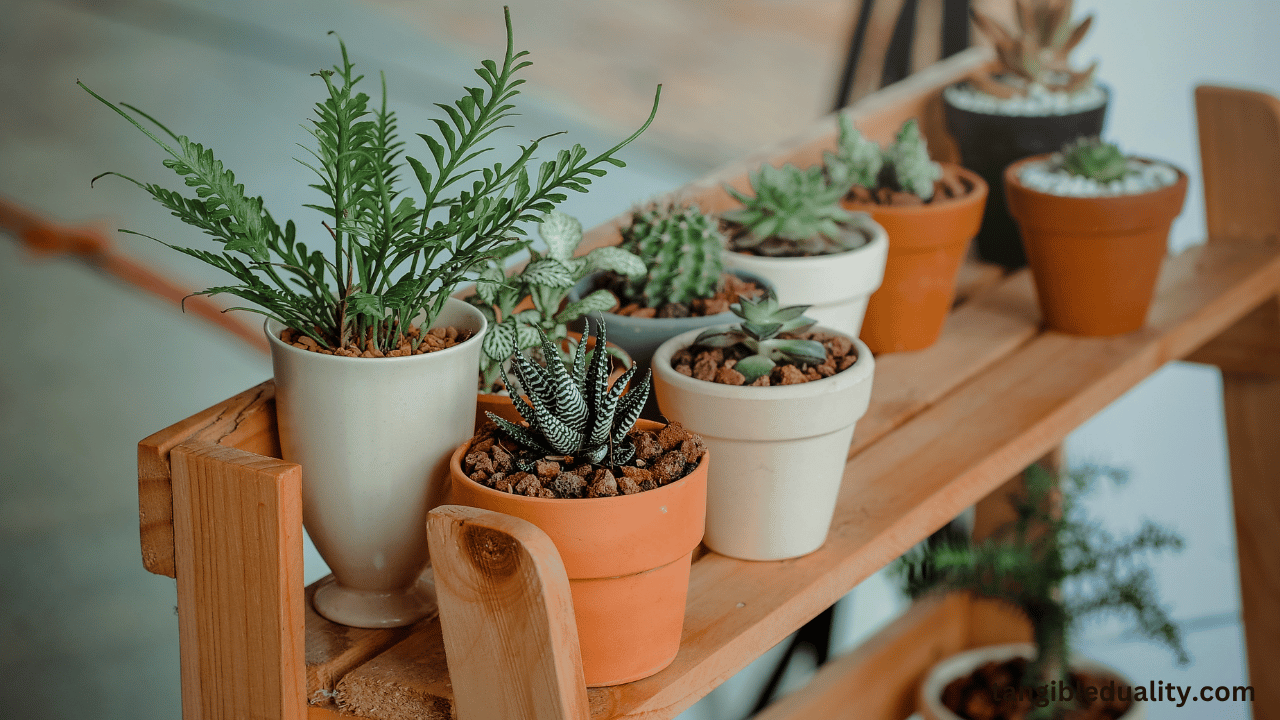Proper drainage is essential for the health and longevity of plants grown in pots and planters, emphasizing the need for a planter for drainage that allows water to escape efficiently.
Without good drainage, water can become trapped in the soil, leading to root rot and other issues that can ultimately kill the plant. To avoid this, it is important to ensure that your pots and planters have effective drainage systems in place.
There are several methods that can be used to improve drainage for plant pots and planters. One effective method is to use pots with drainage holes at the bottom. These holes allow excess water to escape, preventing waterlogged soil. Additionally, adding a layer of rocks or pebbles to the bottom of the pot can help improve drainage by creating space for water to collect and drain away from the roots.
Another method is to use a well-draining potting mix that is specifically designed for container plants. These mixes typically contain perlite or vermiculite, which help aerate the soil and prevent compaction, allowing water to flow freely through the soil.
By implementing these effective drainage methods, such as including a layer of moss or pebbles at the bottom of your planter, you can help ensure that your plants thrive in their pots and planters, avoiding the pitfalls of poor drainage that can lead to plant health issues.
Having proper drainage in plant pots and planters is crucial for the health and well-being of your beloved green companions, ensuring that plants need the right environment to grow. Without adequate drainage, excess water can accumulate at the bottom of the pot, leading to root rot and other issues that can harm your plants.
Fortunately, there are various methods you can employ to ensure optimal drainage and create a conducive environment for your plants to thrive, such as using an indoor planter for drainage with appropriate materials at the bottom.

How to Ensure Proper Drainage in Plant Pots and Planters
One of the most fundamental aspects of ensuring good drainage in plant pots is the presence of drainage holes at the bottom, making it essential for anyone looking to put in the bottom of a planter to enhance drainage.
These holes allow excess water to escape the pot, preventing waterlogging and promoting healthy root growth; it’s a good idea to check these holes periodically to ensure they’re not blocked, as healthy roots are critical for plants to thrive.
In addition to drainage holes, placing a layer of gravel, pebbles, or moss at the bottom of the pot can help improve drainage by creating space for water to flow through, acting as a base layer in the bottom of your planter for drainage.
Alternatively, if your pot or planter does not have drainage holes, you can use coffee filters or even recycled water bottles to create a barrier at the bottom. These materials can help prevent water from pooling at the bottom while allowing excess water to pass through, thereby improving drainage.
Choosing the Right Potting Mix for Improved Drainage
When selecting a potting mix for your plants, opt for a well-draining mix that promotes good airflow and prevents water from being trapped around the roots, which can be especially useful in a pot that doesn’t necessarily have its drainage. Adding perlite or vermiculite to the potting mix can help improve drainage by increasing porosity and preventing soil compaction.
Avoid overwatering your plants, as this can lead to root rot and other issues caused by waterlogging. To prevent this, carefully monitoring how much water your plants need is a good idea. By repotting your plants when necessary and ensuring they have good drainage, you can help promote healthier root growth and prevent water-related problems.
Methods to Improve Drainage in Planters Without Holes
There are effective ways to improve drainage for planters without pre-drilled drainage holes, like adding a layer of moss or pebbles at the pot’s bottom that doesn’t have built-in drainage features.
Using styrofoam packing peanuts or placing plastic pots inside the planter can create air gaps that allow water to drain freely. Additionally, you can create drainage gaps by elevating the inner pot slightly or using water bottles as DIY drainage solutions, ensuring that water doesn’t remain stagnant at the bottom of a planter.
By implementing these methods, such as putting materials like moss in the bottom of your planter, you can ensure that excess water has a pathway to escape, preventing the roots from sitting in water and helping maintain optimal soil moisture levels for your plants.

Ensuring Adequate Watering for Plants with Good Drainage
Monitoring the water levels in the soil is essential to ensure your plants receive adequate moisture without becoming waterlogged. By preventing waterlogging and adjusting your watering practices based on the needs of your plants, you can promote healthier root systems and overall plant health.
Optimizing your watering frequency based on factors such as plant type, season, and environmental conditions can help prevent issues related to overwatering or underwatering. You can support your plants’ thriving by providing just the right amount of water and maintaining good drainage.
Benefits of Proper Drainage for Indoor and Outdoor Plants
Proper drainage not only helps prevent water-related issues but also plays a vital role in enhancing root health and promoting robust plant growth, making it essential to put suitable materials for drainage at the bottom of a planter to support your plant’s needs. By allowing excess water to drain away, you can prevent soil compaction, nutrient imbalance, and other problems from poor drainage.
Good drainage benefits indoor and outdoor plants alike. It supports healthy root development, prevents water accumulation around the roots, and promotes overall plant vigor. Investing in proper drainage practices and materials can significantly contribute to the success and longevity of your potted plants.
Conclusion
To keep plants in good condition and ensure their continued growth, it is vital to improve drainage in plant containers and planters by adding components such as gravel or moss to the bottom of a planter.
Gardeners can provide their plants with the best possible growing circumstances by adopting efficient methods such as using suitable potting mixtures, integrating drainage elements such as gravel or perlite, and ensuring that the pots are placed correctly according to the instructions.
In addition, consistently monitoring soil moisture levels and modifying watering procedures following the findings can further contribute to the successful management of drainage operations.
In the end, prioritizing drainage improvement encourages better plant growth and reduces the chance of root rot and other water-related difficulties, ultimately creating a vibrant and flourishing garden environment.
FAQs
Frequently Asked Questions about Plant Pot Drainage
- Q: How can I improve drainage in plant pots and planters?
- A: To improve drainage in plant pots and planters, you can add materials such as gravel, perlite, vermiculite, pebbles, or even coffee filters to the bottom of the container before adding potting soil.
- Q: What should I do if my plant pot doesn’t have drainage holes?
- A: If your plant pot doesn’t have drainage holes, you can create a drainage layer by placing materials like gravel, packing peanuts, or even a coffee filter at the bottom to prevent waterlogging.
- Q: Can I use a plastic pot without drainage holes for my indoor plants?
- A: Yes, you can use a plastic pot without drainage holes for indoor plants, but you should be cautious not to overwater the plants as excess water may accumulate at the bottom, leading to root rot; consider adding moss or a similar material at the bottom of your planter to improve drainage.
- Q: What are some alternative ways to improve drainage in pots without drainage holes?
- A: In addition to using materials like gravel or packing peanuts, you can also consider using a layer of water bottles, Styrofoam, or even a jug placed at the bottom of the pot to enhance drainage.
- Q: Can I use Styrofoam packing peanuts to improve drainage in plant pots?
- A: Yes, Styrofoam packing peanuts can be used to improve drainage in plant pots by creating a lightweight layer at the bottom that allows excess water to drain away from the roots of the plants.
- Q: Do succulents and cacti need good drainage in their pots?
- A: Yes, succulents and cacti require good drainage in their pots to prevent waterlogged soil, which can lead to root rot. Using well-draining materials at the bottom of the pot is essential for these plants.
- Q: How can I ensure proper drainage for my houseplants in pots?
- A: To ensure proper drainage for houseplants in pots, always use a well-draining potting mix, incorporate drainage materials at the bottom of the pot, and avoid overwatering to maintain healthy plant roots.

